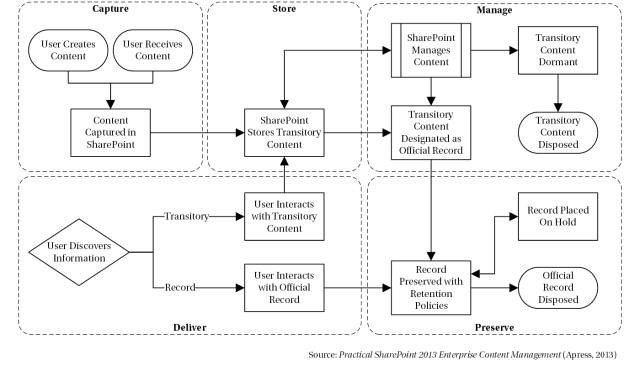Life Cycle Model of SharePoint Content.
Models help to simplify and make sense of a complex system. The life cycle of content within an organization is certainly a complex system.
Information goes through a life cycle within an organization, not always starting from the same place nor always ending up in the same place, nor even following the same path in between. Yet the general outline or pattern of this life cycle stays reasonably consistent, at least enough for me to model a basic framework.
- Content comes into being within an organization, either from a knowledge worker creating it or from receiving it, such as with an e-mail attachment.
- A content management system such as SharePoint then manages the content.
- Users can discover the information, such as by explicitly searching for it or by serendipitously noticing it in a social newsfeed.
- For transitory content that you want to declare as an official record, SharePoint can preserve the content with retention policies.
- Finally, a disposition workflow can dispose of the content.
I use this content life cycle model to analyze and design an information architecture for an enterprise content management solution.
For example, is there transitory content that goes dormant but is never disposed? Identifying exceptions in the content life cycle model can point you toward areas to focus your analysis. Investigating exceptions deeper can confirm that the particular instance is indeed an exception to the general process, or it can identify an area of the process that you need to redesign.
There are no shortcuts to information design and ECM solutions, but a content life cycle model should help guide your analysis and design efforts.
